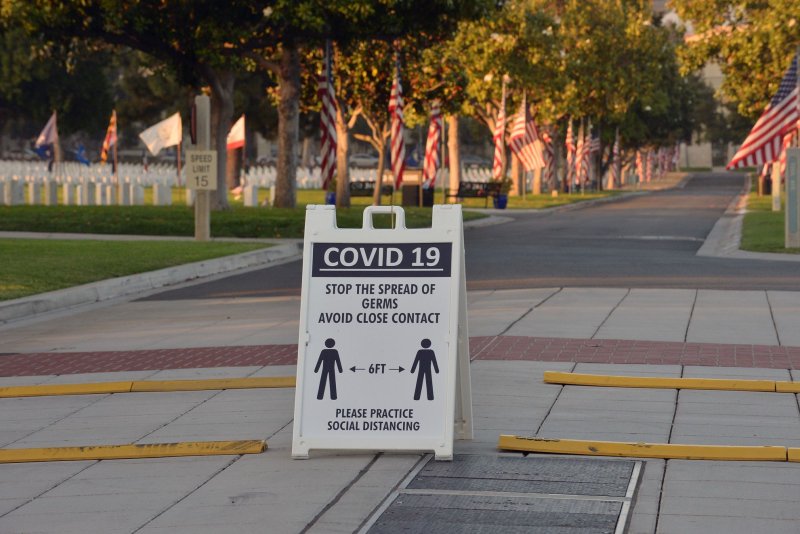A study of cellphone data shows the benefit of social distancing measures in controlling spread of COVID-19. Photo by Jim Ruymen/UPI |
License Photo
Aug. 31 (UPI) -- Staying home helps slow the spread of COVID-19, according to the authors of a study published Monday by JAMA Internal Medicine.
That conclusion is based on an analysis of cellphone use data across the United States between Jan. 22 and May 11, the researchers said.
They found that areas across the country with the highest amount of cellphone activity at residential locations had, on average, a 19% lower growth rate in new infections than those with more use detected at commercial and retail locations.
Cellphone data, they say, could also be useful as a predictive tool when modeling the spread of the pandemic.
"Based on our analysis, we feel that adherence to stay-at-home advisories helps slow the spread of the disease," study co-author Dr. Shiv Tej Sehra, chief of rheumatology at Mount Auburn Hospital in Cambridge, Mass., told UPI.
"Cellphone location data cannot serve as a direct measure of all the ways people distance themselves from others, [but] it may serve as surrogate marker of social distancing that may be useful," said Sehra, who is also an assistant professor of medicine at Harvard.
Many states across the country began issuing stay-at-home advisories in March, when COVID-19 began to take hold in the United States, with only "essential" businesses -- such as supermarkets, drug stores and healthcare facilities -- allowed to remain open.
To assess compliance with -- and effectiveness of -- these advisories, the researchers compared publicly available aggregated and anonymous cellphone use data, by location, for 2,740 counties across the country with virus case counts for these areas, from late January through mid-May.
The cellphone use data was available for various locations, including places of business, transit stations, retail shops, grocery stores, parks and residences, the researchers said.
Over the 3 1/2-month study period, cellphone use at workplaces, transit stations and retail shops declined by between 7% and 59% across the country.
At the same time, activity at residential locations increased between 11% and 24%, according to the researchers.
The areas with the highest increases in cellphone activity in residential areas saw, on average, a roughly 7% decline in COVID-19 case numbers.
But those with the lowest reductions in cellphone activity at transit stations and retail shops saw infections rise by an average of approximately 12% during the study period, the data showed.
"Cellphone location data can be used to improve the estimation of future trends of the pandemic, [and] it also illustrates the -importance of adhering to the stay-at home advisories put out by policymakers," Sehra said.
"[This data] can help researchers and policymakers further improve on case prediction models, [but] should not be used at an individual level to assess disease risk," he said.















